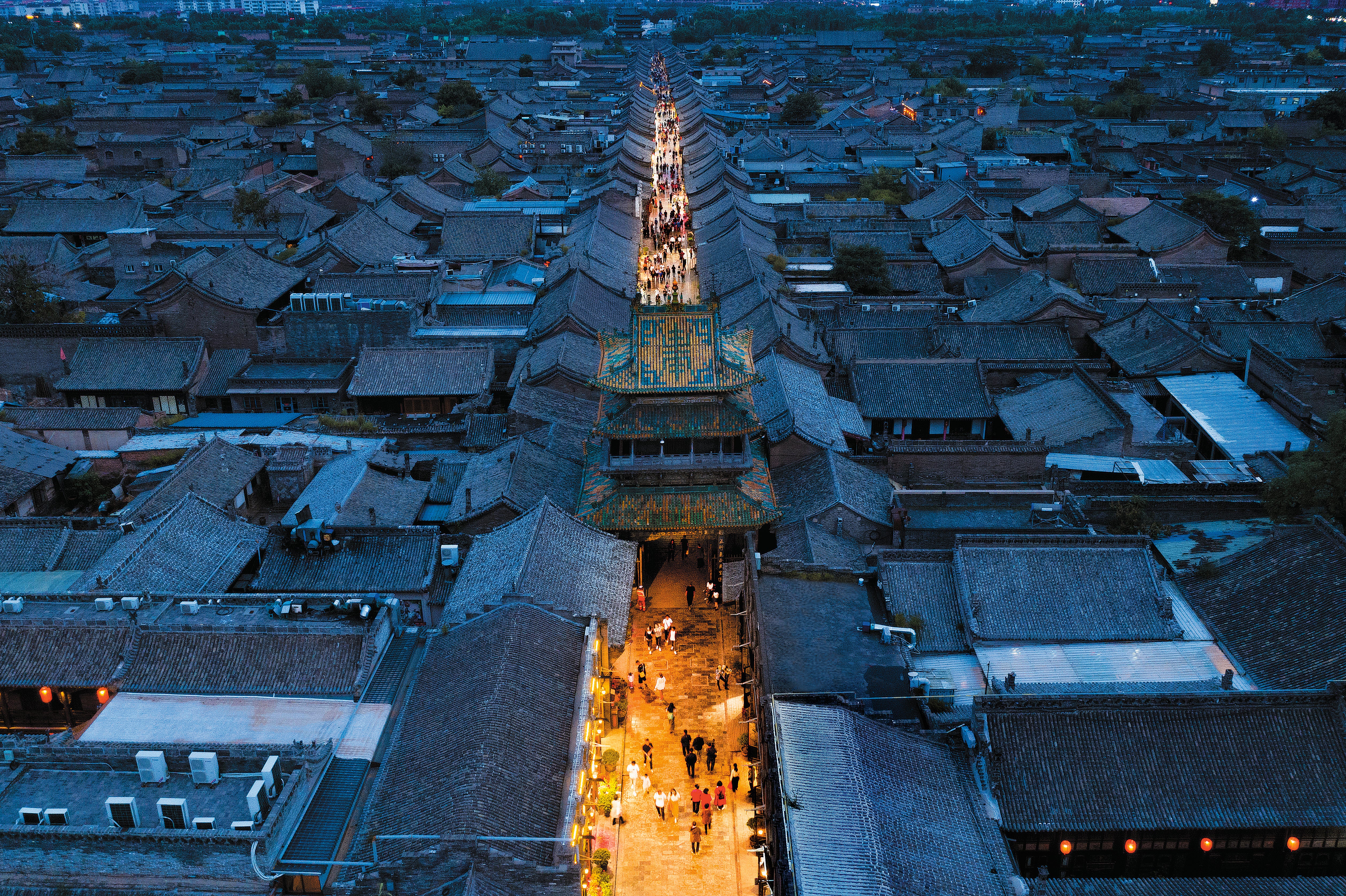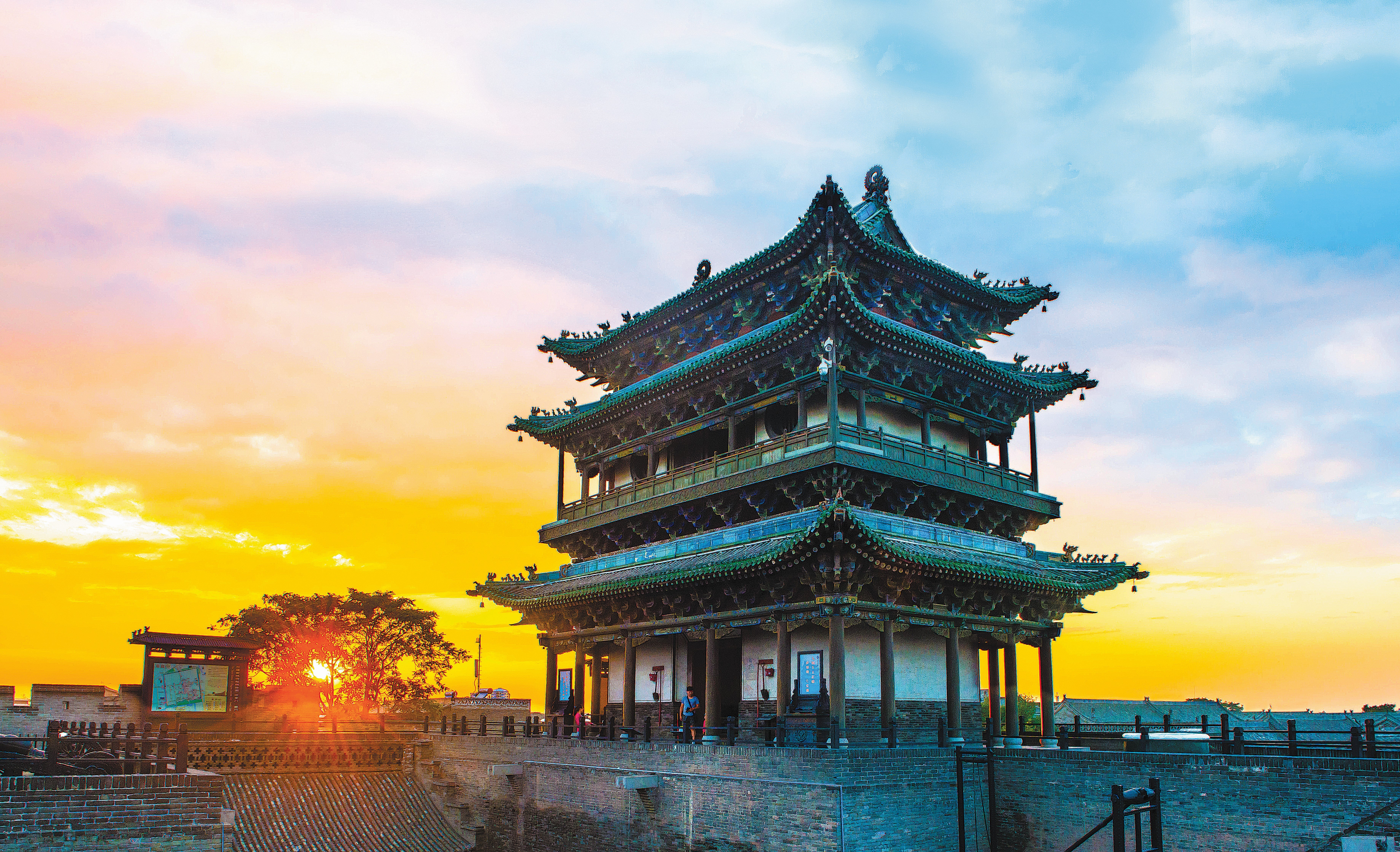The city that withered and burst back to life again
THE ARTICLES ON THESE PAGES ARE PRODUCED BY CHINA DAILY, WHICH TAKES SOLE RESPONSIBILITY FOR THE CONTENTS

Guo Chengxian is ecstatic. His ancestral home in Pingyao – a small, two-storey building that is more than three centuries old – has received a new lease of life. The county government has offered a subsidy of 67,000 yuan (£8,105) to help restore the parts of the property most desperately in need of repair.
He is among many locals who have benefited from the county’s restoration and renovation drive for traditional dwellings since 2012. The government offers two-thirds of the renovation costs while the owners pay the rest.
The walled town of Pingyao is tucked away in the city of Jinzhong in North China’s Shanxi province, half an hour by high-speed train from the provincial capital of Taiyuan.
Pingyao is famous for its urban planning and well-preserved architecture from the Ming (1368-1644) and Qing (1644-1911) dynasties.
Ancient temples, along with old-fashioned streets, shops and houses, give an insight into the architectural style of cities built in central China from the 14th to the 20th centuries. The nearly 4,000 quaint shops and homes are not just visually pleasing, but also bear testimony to the town’s economic prosperity throughout the 19th century until the early 20th century, when it was the financial nerve centre of the country.
Founded in the 14th century, Pingyao reached the peak of its prosperity with the rise of the Shanxi merchants. “It became the country’s economic lifeline under Qing emperor Xianfeng (1831-61),” says Lei Yaxian, head of Pingyao’s cultural relics bureau.

Unfortunately, the town lacked the wherewithal to develop lasting industries. An acute shortage of water was its biggest disadvantage. Its regional trade advantage was also undermined by the development of modern transportation.
By the 1970s, Pingyao had been reduced to ruins, with only three of its original 72 watchtowers standing. Run-down dwellings, vehicle boneyards and a thick layer of charcoal covering everything added to the picture of decline.
By the early 1980s, the town was on the verge of disappearing from the map when the authorities decided to raze everything to the ground. However, the plan was called to a halt by experts, including Tongji University professor Ruan Yisan, who believed it would be a travesty to bulldoze such a colossal amount of history.
In 1986, the State Council labelled Pingyao ‘a Chinese historical and cultural city’, and a comprehensive preservation plan was drawn up. Subsequently, the local administration divided historical buildings into four categories, says Cao Changzhi, deputy director of the historical and cultural city committee of the Chinese Society for Urban Studies.
Some buildings were preserved to become visitor attractions, and others were adjudged to have practical uses, Cao said. Traditional residences were turned into hotels, tea rooms and wine houses to offer tourists a taste of the distinctive local lifestyle, while homes of historical figures became memorials or museums.
In December 1997, Pingyao was named a UNESCO World Cultural Heritage Site. A string of international events followed, such as the Pingyao International Photography Festival, first held in 2001. That event drew 40,000 visitors. The annual festival has since evolved to become a cultural bond between the ancient town and the rest of the world.
Lei Yaxian says that more than 35.5 million (£4.3 million) yuan has been spent on repairing more than 10 sections of the inner wall of the town since 2016.
The internal part of the wall features a rammed earth construction – using compacted earth, chalk, lime and gravel – with an outer layer of brick. “The rammed earth is replenished (during restoration) so that the town can retain its original look,” says Shao Shuai, an architect who has been maintaining Pingyao’s wall for a decade.
